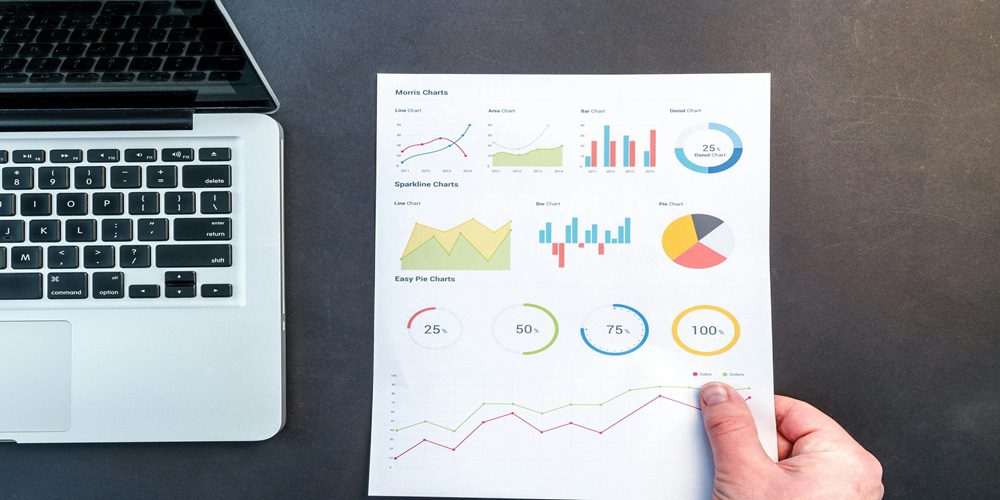Exploring Key Trends in Big Data Analytics: Essential Insights for You

In the dynamic landscape of big data analytics, remaining ahead of the curve holds paramount importance. From the integration of machine learning to the advent of real-time data processing, numerous trends are reshaping the methodologies we employ to analyze and interpret data in contemporary times. If you seek to remain well-informed about the latest advancements in this swiftly expanding domain, your search ends here. Within this article, we will delve deep into the top trends currently defining big data analytics, providing you with essential knowledge for navigating this ever-evolving field.
Introduction to Big Data Analytics
Big data analytics represents the systematic examination of vast and intricate datasets to uncover patterns, trends, and insights pivotal for informed decision-making. In an era dominated by technological proliferation and the exponential growth of data accumulation, big data analytics stands as a cornerstone for organizations across diverse industries.
In its essence, big data analytics involves the aggregation of extensive structured and unstructured data from an array of sources, including social media platforms, sensor networks, and transaction records. Subsequently, this data undergoes sophisticated processing utilizing advanced tools and techniques to extract actionable insights. The ultimate aim of big data analytics transcends mere information gathering; it strives to derive insights capable of enhancing operational efficiency, driving profitability, and enriching customer experiences.
The Ascendancy of Artificial Intelligence (AI) in Big Data Analytics
Artificial Intelligence (AI) has permeated various sectors, and the realm of big data analytics is no exception. In recent times, the utilization of AI has surged within the domain of big data analytics owing to its capacity to handle extensive datasets and yield profound insights. The convergence of big data and AI has unfurled new vistas for businesses, facilitating improved decision-making processes, competitive edge attainment, and the exploration of novel growth avenues.
The proliferation of AI in big data analytics can be attributed to the escalating volume and complexity of data generated by organizations. Traditional approaches to data analysis often falter in providing timely insights capable of keeping pace with the ever-shifting business landscape. Herein lies the prowess of AI; its robust algorithms enable swift analysis of large datasets, enabling businesses to discern patterns, anomalies, and trends hitherto indiscernible through conventional means.
Furthermore, AI’s allure in big data analytics emanates from its capacity to automate erstwhile labor-intensive or time-consuming tasks. By automating such processes, businesses can economize on time and resources while bolstering efficiency and precision. Leveraging machine learning methodologies such as predictive modeling and natural language processing (NLP), AI-infused systems dissect copious amounts of unstructured data, unearth hidden patterns, and furnish actionable insights conducive to business expansion.
Moreover, the amalgamation of AI into big data analytics expedites decision-making processes predicated on real-time analyses. Whereas conventional methods may necessitate days or weeks to furnish accurate insights, AI-powered systems bestow real-time insights, empowering businesses to make expeditious and well-informed decisions. For instance, retailers harness artificial intelligence to analyze customer purchasing behavior in real-time, thereby optimizing inventory management strategies.
Noteworthy are the cost-saving advantages associated with AI adoption in big data analytics. As machine learning algorithms evolve incessantly, necessitating diminished human intervention, significant cost reductions ensue. Companies can leverage AI technology to automate sundry tasks encompassing data collection, cleansing, and analysis, obviating the need for human labor. This not only curtails operational expenses but also mitigates errors stemming from manual data handling.
Real-Time Analytics for Instantaneous Insights
Real-time analytics has emerged as a linchpin in contemporary big data analytics. With the proliferation of data volume, variety, and velocity, businesses can ill afford to await hours or days for insights to materialize. Swift and accurate decision-making constitutes the sine qua non for maintaining competitiveness in today’s frenetic market milieu.
Real-time analytics entails the expeditious analysis and dissemination of insights from data as it materializes. In lieu of awaiting batch processing cycles, organizations receive instantaneous answers and insights from their data troves. This real-time paradigm empowers businesses to respond promptly to shifting trends and customer behaviors, furnishing them with a decisive edge over counterparts reliant on traditional batch processing methodologies.
A prime boon of real-time analytics lies in its aptitude for detecting anomalies or patterns in streaming data as they transpire. Financial institutions leverage real-time analytics to pinpoint fraudulent activities in credit card transactions, while banks preempt potential cybersecurity threats afore they burgeon into full-fledged crises. Additionally, e-commerce entities track user behavior in real time, enabling tailored offers and recommendations grounded in individual browsing histories.
Furthermore, with the proliferation of social media platforms and online communication channels, businesses are inundated with copious amounts of unstructured textual data, encompassing tweets, reviews, and emails. Real-time analytics not only facilitates the capture of such data but also enables its continuous analysis for sentiment analysis and analogous purposes. This affords businesses deeper insights into customer sentiments and opinions, facilitating product or service refinement initiatives.
Integration of Machine Learning into Big Data Analysis
Recent years have witnessed a seismic paradigm shift within big data analytics, marked by the integration of machine learning methodologies. Machine learning, a subset of artificial intelligence, entails imbuing machines with the ability to learn and enhance from experience sans explicit programming. This paradigm has garnered considerable attention within the realm of big data analytics owing to its efficacy in handling voluminous and intricate datasets with enhanced efficiency and accuracy.
The integration of machine learning into big data analysis is underpinned by its predictive prowess. Traditional statistical models rely on preordained rules and assumptions, which may prove inadequate or inaccurate when analyzing expansive datasets. Conversely, machine learning algorithms possess the acumen to discern patterns and relationships within data autonomously, rendering them more adaptable and resilient.
Another salient advantage of machine learning in big data analytics is its proclivity for perpetual learning and evolution. As fresh data becomes available, these algorithms recalibrate their results, attuning them to prevailing trends. This renders them ideally suited for handling real-time streaming data, a critical exigency across sundry industries, including finance, healthcare, and marketing.
An eminent application of machine learning within big data analytics resides in anomaly detection. Anomalies denote deviations from anticipated patterns or behaviors within data, which may signify potential issues or opportunities. By training machine learning algorithms on historical datasets, businesses can promptly flag aberrant data points for further scrutiny, sans human intervention.
Moreover, clustering techniques, a variant of unsupervised machine learning, have burgeoned into an indispensable tool for segmenting voluminous datasets into cohorts predicated on shared attributes. This empowers businesses to glean insights regarding customer behavior, preferences, and exigencies with heightened efficacy. Clustering further catalyzes the personalization of customer experiences, engendering targeted marketing campaigns grounded in shared group attributes.
However, it is imperative to underscore that the integration of machine learning into big data analysis necessitates adept professionals conversant with both domains. Not all enterprises boast access to such talent or resources, thereby necessitating the potential outsourcing of requisite expertise. Nevertheless, the dividends reaped from leveraging machine learning within big data analytics far outweigh the preliminary hurdles and investments.
The Escalating Adoption of Cloud-Based Big Data Tools
The precipitous proliferation of data in contemporary times has underscored the imperative for businesses to adeptly manage, store, and analyze prodigious datasets. This catalyzed the widespread embrace of big data tools, meticulously crafted to grapple with mammoth datasets and glean actionable insights.
A discernible trend within this milieu is the escalating adoption of cloud-based big data tools. These tools and technologies, hosted on remote servers and accessible via the internet, furnish organizations with an array of advantages vis-a-vis traditional on-premises solutions.
Foremost amongst these advantages is scalability. Traditional on-premises solutions often necessitate capital-intensive infrastructure upgrades as data needs burgeon. Conversely, cloud-based big data tools confer virtually boundless storage and processing capabilities sans the onus of managing physical servers.
Moreover, cloud-based solutions epitomize cost-effectiveness. Traditional on-premises setups entail substantial upfront investments in hardware and software licenses, alongside ongoing maintenance outlays. In contrast, cloud-based big data tools operate on a pay-as-you-go model, wherein businesses remit solely for the resources utilized, obviating unnecessary expenditures. This renders cloud-based solutions eminently affordable, particularly for smaller enterprises or those ensnared in fluctuating data demands.
Another salient perk of cloud-based big data tools resides in enhanced accessibility and collaboration. As these tools are accessible via the internet from any locale boasting an internet connection, employees gain unfettered access to and engagement with voluminous datasets, irrespective of geographic confines. This augurs well for fostering collaboration amidst teams dispersed across divergent geographies or time zones.
Moreover, myriad cloud-based big data tools tout built-in security features, spanning encryption to routine backups. This imbues businesses with peace of mind regarding the safeguarding of sensitive data, mitigating concerns pertaining to data breaches and cybersecurity lapses.
The Impact of the Internet of Things (IoT) on Big Data Analytics
The Internet of Things (IoT) epitomizes an ever-expanding network of commonplace objects imbued with internet connectivity, facilitating the collection and exchange of data. As the roster of internet-connected devices burgeons incessantly, the volume of generated data escalates exponentially. This veritable deluge of data has catalyzed the imperative for advanced techniques to handle and analyze it, ushering in the epoch of big data analytics.
The impact of IoT on big data analytics is profound and far-reaching. The convergence of these two technologies has unfurled novel vistas for businesses, governments, and organizations spanning every conceivable industry. Below, we delineate key modalities through which IoT is reshaping the landscape of big data analytics:
Increased Volume and Variety:
With billions of devices tethered to the internet, the sheer volume of data engendered is staggering. This prodigious trove of data furnishes big data analysts with a veritable cornucopia of information, yielding insights hitherto inconceivable. Furthermore, IoT engenders diverse data types sourced from sundry origins, encompassing text, audio, video, sensor readings, and social media feeds, endowing it with unparalleled diversity.
Real-Time Data Processing:
IoT engenders real-time or near-real-time streaming data emanating from an array of devices, spanning wearables, smart appliances, and vehicles. Big data platforms have evolved in tandem, adeptly processing this continuous deluge whilst swiftly identifying patterns or anomalies, thereby fostering invaluable insights for businesses.
Predictive Analytics:
By amalgamating big data analytics with machine learning algorithms, predictive models predicated on historical trends and real-time IoT-generated data are formulated. This amalgam equips businesses with prognostic capabilities, enabling prescient decision-making bolstered by the analysis of extensive structured and unstructured datasets sourced from disparate origins, including operational logs generated by equipment sensors.
Enhanced Customer Experience:
IoT affords companies deeper insights into customer exigencies via the analysis of user behavior engendered by mobile applications or wearable technology. This, in turn, catalyzes enhancements in customer service experiences across multifarious industries, spanning retail and e-commerce, fitness and healthcare, tourism, hospitality, and beyond.
Analytics at the Edge:
IoT fosters the processing and analytics of data proximate to its source, colloquially referred to as ‘edge computing.’ This paradigm shift curtails the quantum of data necessitated for transmission and storage in central servers, concomitantly engendering expeditious processing and diminished bandwidth costs.
The Imperative of Data Security and Privacy in Big Data Analysis
Amidst the maelstrom of technological advancements and digital transformation, data has emerged as a preeminent asset for businesses. Big data analytics embodies the process of culling actionable insights from voluminous and intricate datasets, facilitating informed decision-making. However, concomitant with the escalating utilization and accumulation of copious amounts of data, arises an onerous responsibility to safeguard its security and privacy.
Data security denotes the safeguarding of sensitive information against unauthorized access, use, disclosure, disruption, or modification, whether during storage or transmission. Conversely, data privacy pertains to regulating the collection, utilization, sharing, or storage of personal information by organizations. Both facets are integral within the ambit of big data analytics, exerting a profound influence on individuals’ rights whilst harboring substantial financial ramifications for businesses in the event of breaches.
One of the primary rationales underpinning the fortification of big data resides in the mitigation of cyber threats, ranging from hacking and phishing scams to malware incursions. Hackers frequently target extensive databases housing sensitive information such as credit card particulars, healthcare records, and personally identifiable information (PII), endeavoring to perpetrate identity theft or fraud. A poignant illustration of this pertains to the Equifax breach, wherein malefactors gained access to the personal information of 147 million individuals, including names, addresses, and social security numbers.
Moreover, regulatory compliance looms large within the purview of big data analytics, with regulations such as the General Data Protection Regulation (GDPR) assuming primacy. Failure to comply with GDPR and analogous mandates can precipitate hefty fines amounting to €20 million or 4% of global annual turnover, whichever sum proves higher. This underscores the exigency for robust security measures when navigating the terrain of big data.
Ensuring the implementation of robust privacy protection mechanisms engenders trust between businesses and their clientele. In an era characterized by burgeoning concerns surrounding online privacy breaches, consumers evince heightened awareness vis-a-vis their rights, yearning for assurances regarding the ethical handling of their personal information by organizations. By espousing stringent privacy policies and procedures, companies engender a favorable reputation amongst customers, cultivating brand loyalty in the process.
Future Projections for the Evolution of Big Data Analytics
The trajectory of big data analytics is one marked by perpetual evolution and rapid advancement. In light of the escalating ubiquity and significance of big data, it behooves stakeholders to remain apprised of extant trends and prognostications pertaining to its future trajectory. Below, we prognosticate on future trends likely to shape the evolution of big data analytics:
Artificial Intelligence (AI) Integration:
Foremost amongst future projections for big data analytics is its seamless integration with artificial intelligence (AI). AI stands poised to play an ever-expanding role within big data analytics, leveraging machine learning algorithms to distill insights from complex datasets with unparalleled efficacy. With the continual refinement of machine learning methodologies, AI will emerge as a linchpin in the analysis of intricate data sets, discerning patterns and trends with unparalleled acumen.
Hybrid Cloud Solutions:
The prevalence of hybrid cloud solutions is projected to persist within the realm of big data analytics. By marrying public cloud services such as Amazon Web Services (AWS) or Microsoft Azure with private cloud infrastructure, organizations strike an optimal balance between data security and computational flexibility.
The Emergence of Edge Computing:
Edge computing is slated to emerge as a seminal trend in the evolution of big data analytics. With an ever-growing pantheon of connected devices generating copious volumes of real-time data, edge computing enables the processing of this information proximate to its source. This paradigm shift diminishes network bandwidth whilst expediting response times, thereby underscoring its pivotal significance for critical applications.
Augmented Analytics:
Augmented analytics, predicated on the confluence of machine learning algorithms and natural language processing (NLP), is poised to emerge as a transformative force within big data analytics. This paradigm automates data preparation, insights generation, and visualization, enabling business users to interact with data via natural language queries. This democratization of data analytics furnishes stakeholders with instantaneous insights devoid of requisite technical expertise.
Conclusion
As technological frontiers continue to expand, the terrain of big data analytics undergoes perpetual transformation. The trends elucidated herein merely scratch the surface of the myriad ways in which companies and organizations harness these technologies to glean invaluable insights and facilitate informed decision-making. It is patently evident that big data analytics will remain an indispensable force in shaping businesses and industries for the foreseeable future. Accordingly, it behooves individuals and organizations alike to remain abreast of extant trends and advancements, thereby harnessing the full potential of big data analytics.





